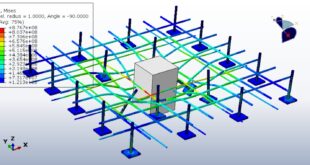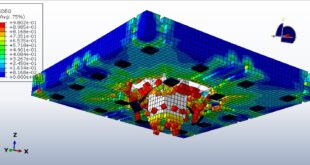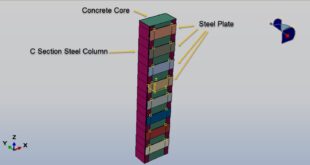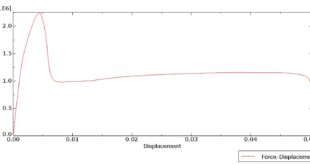In this tutorial, the Bullet penetration model using large deformation explicit finite element simulations of rapid penetration in soil in Abaqus software has been studied. The bullet is modeled as a three-dimensional part, and the soil as an Eulerian model. You can see a figure of the assembled parts below
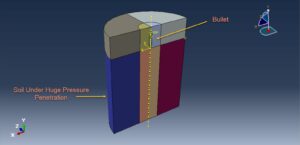
Bullet penetration in soil depends on several factors, including bullet type, velocity, soil composition, and moisture content
Key Factors Affecting Penetration
Bullet Characteristics – Heavier, slower bullets (e.g., large-caliber rounds) penetrate deeper than lighter, faster ones (e.g., high-velocity rifle rounds), which may fragment or deflect
Soil Type
Loose, dry sand offers low resistance, causing bullets to decelerate quickly
Clay or wet soil is denser, slowing bullets faster but sometimes allowing deeper penetration due to cohesion
Gravel or rocky soil can cause bullets to deflect or break apart
Impact Angle – A steep angle (near-vertical) typically results in deeper penetration than a shallow angle
Bullet Shape – Round-nose bullets may penetrate deeper than spitzer (pointed) bullets in soft soil due to reduced tumbling
Soil acts as an effective bullet stopper over sufficient depth, but penetration varies widely based on bullet energy and soil properties. Wet, compacted soils generally resist deeper penetration compared to dry, loose soils
During the simulation, the bullet penetrated the soil of about the soil elevation. You can see some figures of the results below
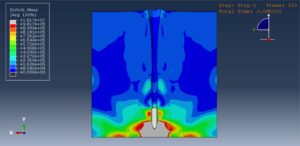
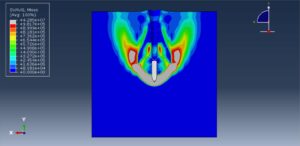
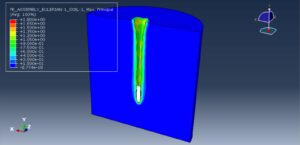
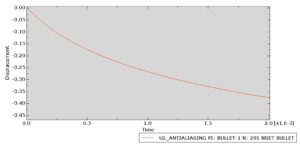
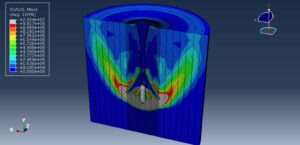
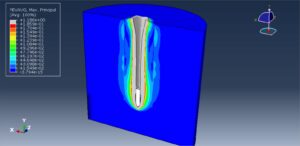
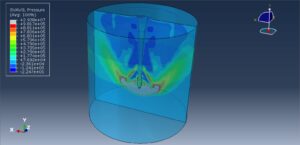
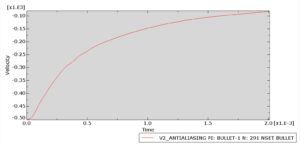
 Abaqus tutorials Abaqus tutorials
Abaqus tutorials Abaqus tutorials
